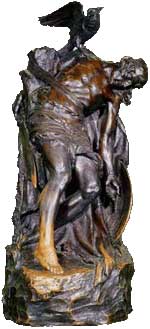 So had started this in March and, well, somehow never got back to finish. This was the post COVID-19 ate.
So had started this in March and, well, somehow never got back to finish. This was the post COVID-19 ate.
Wow, it has been a long time. The last “state of Teh Project post was now over a years and a half ago (ETA: now almost two years exactly). And….not a lot progressed on that front.
In fact, regressed. My computer crashed and I lost a lot of my writing, the most recent stuff but then it turned out what I had backed up ….was screwed up. Of course, a lot can be rehashed from the already published material, which was safely in my email. Techphobe me didn’t use cloud back up for other stuff. I’ve learned too late on that.
There is some hope we can find someone to retrieve the files ….we just need enough money to pay them. That the animals aren’t eating.
But the animals have been centering themselves in my life more than the work has. Although they, especially the dogs, are always part of the work on this path, of course. We adopted another Greyhound in October 2018, Ruadhan (the Little Red One in the photo). We wanted another hound as Gleann‘s (the black ball of fuzz lying down) age caught up with him, neurologically, and he developed Canine Cognitive Disorder and physical neurological problems we knew he wasn’t going to be with us too much longer at that point. We wanted him to have a female hound around, as he always bonded with the girls more, and we wanted Cairbre (the big blond dude with the white face) to have another packmate so he’d not be alone when we lost Gleann. Which happened one year and nine days later. The photo here is of the pack at his last ritual in August. He was tired, he lied down for much of it, he wanted to go out to the border offering but I had to carry him (fortunately my shoulder has healed). I still can’t grok that he’s really gone from this body.
Our goat Elína developed an infection in her joints during the summer, which we thought we were getting under control with antibiotics but it went to her lungs and she died of pneumonia. Unfortunately, I think the extreme humidity that we now have here was just too much. I keep feeling we could have done something better than we did and save her.
(that’s where I got to….yeah, needed a pause after writing about death and then….pandemic hit…..)
I spent a lot of time last year just being with Gleann. And also obsessing over the upcoming Terminator: Dark Fate and most of my writing was blogging and creating new pages for The Sarah Connor Charm School. My plans to get my business started again were on hold, but I had decided to study for the American College of Sports Medicine personal trainer certification as the organization I am certified with got bought out by another organization and has abandoned the CPTs. It took me a few years to finally call it quits as I had been with them since 1992.
Ironically, I had decided during the winter that I would focus on online training, for various reasons I just don’t want to train much around here. Of course, I didn’t get this started and I’m still not ready to, while the pandemic has had many trainers turning to online training. I could have been ahead of the game. Now I’m behind. It doesn’t help that I’m debating with myself about bothering with the ACSM certification, I am considering not getting back into the field. There are various reasons for this, which I won’t go into here, at least right now. One, of course, being hating to spend the money when I am in debate about it, which is sort of a circular thing. They do now have a proctored online test, which would require a somewhat more reliable computer than I have now. And some work to have a room that will meet their requirement….this place is like a series of open concepts parts, I basically will need to do it in a bedroom or bathroom to have closed doors and all. ?
In most ways the COVID-19 pandemic has made things more the same than they might have been, rather than actually change things. That is, I had intended to make an effort to get down off our mountain at least once a week just before it hit. And that isn’t happening. Nor will it for awhile. The only people I have seen in months are my husband, Aaron, and a few drivers who have insisted on stopping to tell me my dogs are beautiful or that there’s a bear where I’m not even heading (as if I haven’t met up with a bear twice this summer, that I know of …as they usually try not to be seen, much closer to home). I really do wish people would stop stopping to try to talk to me when I’m out running or walking the hounds. Therefore we’re working on cleaning up our trails enough for the delicate-skinned beasts as well as make new trails. I’d much rather just have Aaron the only person I deal with in person right now.
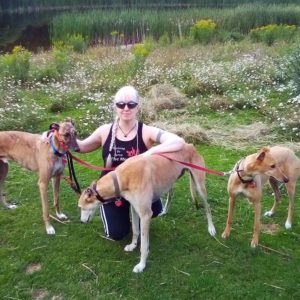 Aaron did take one, very careful (limited stops and avoiding contact with anyone, including at the kennel), trip to Dover to pick up our newest Greyhound. We had planned to adopt this summer, the pandemic meant that the planned closing of Florida tracks was early so that dogs expected this summer landed there in March, but at the same time getting dogs vetted was sparsed out longer. So after seeing posts about him on the Greyhound Placement Service, NH FB group for weeks, we technically adopted Trúghadh (the brindle on the left) the first week of May but brought him home the end of June, two weeks after his first birthday. He is a spooky boy, very shy of strangers, who needed a home with other Greyhounds. He’s doing great! Still working things out. He has gotten bold enough to be in the “asshole” stage of settling in, where he’s testing boundaries and establishing himself in the pack. This is a good thing, btw, it’s part of the process. He’s a sweet, lovable boy. The youngest hound we’ve ever adopted.
Aaron did take one, very careful (limited stops and avoiding contact with anyone, including at the kennel), trip to Dover to pick up our newest Greyhound. We had planned to adopt this summer, the pandemic meant that the planned closing of Florida tracks was early so that dogs expected this summer landed there in March, but at the same time getting dogs vetted was sparsed out longer. So after seeing posts about him on the Greyhound Placement Service, NH FB group for weeks, we technically adopted Trúghadh (the brindle on the left) the first week of May but brought him home the end of June, two weeks after his first birthday. He is a spooky boy, very shy of strangers, who needed a home with other Greyhounds. He’s doing great! Still working things out. He has gotten bold enough to be in the “asshole” stage of settling in, where he’s testing boundaries and establishing himself in the pack. This is a good thing, btw, it’s part of the process. He’s a sweet, lovable boy. The youngest hound we’ve ever adopted.Aside from hanging out with the dogs, horses and cats, I’ve been very focused on exercise. Okay, I guess while hanging out with the dogs (when running) and cats (they hang out in our home gym almost a the time I’m in there) and the horses create a lot of additional physical activity even when I’m not hanging out with them (although, now that I think about it, they all seem to like to keep getting in the way while we clean up after them).
My strength recovery from my shoulder surgery got slowed down when I developed a very painful case of De Quervan’s tenosynovitis in the same wrist last summer, just as I started to catch up my strength again. PT helped a lot, although not really until I decided to take a couple of months off from lifting, because it just hurt too much. While it’s going to be a sort of constant battle the wrist is functional and relatively pain free. I still keep up my PT exercises, now doing both writs as I have noticed symptoms in my left one as well. But then, I am also noticing issues with my left shoulder that are similar to what started in my right back in the winter of 2009/2010 that go misdiagnosed. However, at this point my strength has improved greatly. It might help that for the past five months I haven’t had a single cold or stomach bug or anything that might take me out for a few days. The COVID-19 protocols are at least helping with that. I just hope it will be enough to help prevent us getting this virus.
So, Teh Project. Lost files are still not recovered and I’m not sure if we can ever find someone. Especially as they’d have to be close enough to hand the bricked hard-drive off ourselves as we don’t want to physically lose it, too! And we were paranoid about any shipping long before Trump’s full-blown attack on the USPS. And currently not likely to travel very far or want to be close enough to someone to hand it to. So I am poking away at the previously published stuff, to try to expand it for the manuscript, still hoping to retrieve and work in what I had already for that that wasn’t published. We’ll see.
I’ve also played a little with video, although I really need a new computer if not a camcoder instead of using the webcam if I want to put together my seriously delayed workshops together that way. Given that any chance of live presentations is going to likely mean delay is just so much worse…. So that’s kind of a “watch this space.”
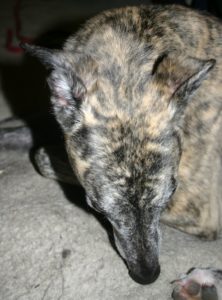 **UPDATE: I realized I should update that we were unable to save our Gráinne. The lymphoma was just too aggressive, she went down hill very quickly and had some sort of episode involving either a lesion or a blood-clot to the brain. She regained her ability to walk after the first one, but the vet was clear that nothing could be done. We planned to take her for her last trip a few days later, but she had another similar episode and we took her to an emergency vet in the middle of the night. We probably do not have to mention that we are devastated as is Gleann. **
**UPDATE: I realized I should update that we were unable to save our Gráinne. The lymphoma was just too aggressive, she went down hill very quickly and had some sort of episode involving either a lesion or a blood-clot to the brain. She regained her ability to walk after the first one, but the vet was clear that nothing could be done. We planned to take her for her last trip a few days later, but she had another similar episode and we took her to an emergency vet in the middle of the night. We probably do not have to mention that we are devastated as is Gleann. **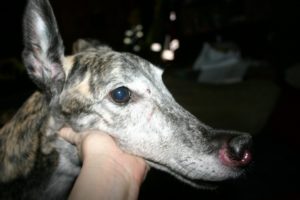
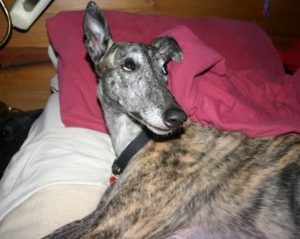 She could have years more with this, it is devastating that we may have to lose her just because Aaron broke his leg!
She could have years more with this, it is devastating that we may have to lose her just because Aaron broke his leg!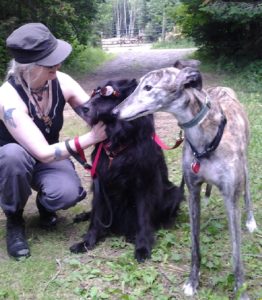 She has had a stressful year, losing Sach was a blow to her, I know. She was stressed as we took care of Gleann’s situation. I feel like we had just gotten to the point where we could all relax and enjoy time together when she got really sick. I don’t want this to have been her last year! I want her to get better, which she has a very good chance of if we start treatment this week, and have a couple of relatively happy years. She just turned 7, she needs more time!
She has had a stressful year, losing Sach was a blow to her, I know. She was stressed as we took care of Gleann’s situation. I feel like we had just gotten to the point where we could all relax and enjoy time together when she got really sick. I don’t want this to have been her last year! I want her to get better, which she has a very good chance of if we start treatment this week, and have a couple of relatively happy years. She just turned 7, she needs more time!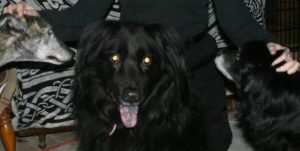
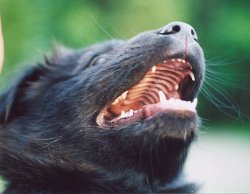 He was just weeks old when he came to live with us, all teeth and growls and unruliness, and a few weeks later we did our Lùnasdal/Là Fhéill Mhacha. Almost as soon as we got there Gleann started running as fast as his little legs could take him deiseal around the fire pit. We would get him to stop, but as soon as let go he’d just start running again. Through the whole ritual. With a break for shortbread.
He was just weeks old when he came to live with us, all teeth and growls and unruliness, and a few weeks later we did our Lùnasdal/Là Fhéill Mhacha. Almost as soon as we got there Gleann started running as fast as his little legs could take him deiseal around the fire pit. We would get him to stop, but as soon as let go he’d just start running again. Through the whole ritual. With a break for shortbread.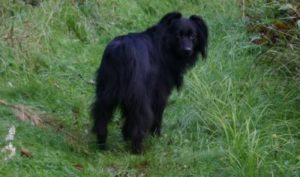
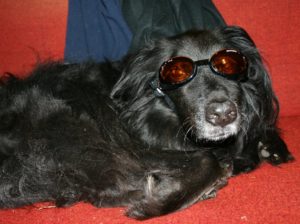 And so,
And so, 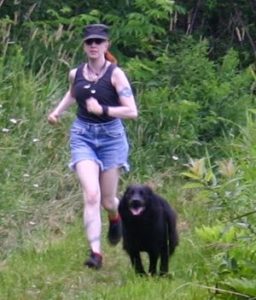 These workshops are, after all, directly related to the sort of connections that my relationship with Gleann and my other dogs represent. I have one that is very basic for those just starting out and that might be of interest to those not on the Outlaw warrior path to help understand where it can fit in modern Gaelic Reconstructionist Paganism and maybe open their own traditions to those on this one. I have varying degrees of exploration for those on the path, including a deeper look at being wolf. I also have a broader look at animals in the cultures that goes beyond the usual symbolic focus most resort to into where practicality, actually living and relying on these animals, led to the symbolism and how it can lead back to real relationships with living animals. And a fitness one (provided I am able to renew my certification in time).
These workshops are, after all, directly related to the sort of connections that my relationship with Gleann and my other dogs represent. I have one that is very basic for those just starting out and that might be of interest to those not on the Outlaw warrior path to help understand where it can fit in modern Gaelic Reconstructionist Paganism and maybe open their own traditions to those on this one. I have varying degrees of exploration for those on the path, including a deeper look at being wolf. I also have a broader look at animals in the cultures that goes beyond the usual symbolic focus most resort to into where practicality, actually living and relying on these animals, led to the symbolism and how it can lead back to real relationships with living animals. And a fitness one (provided I am able to renew my certification in time).
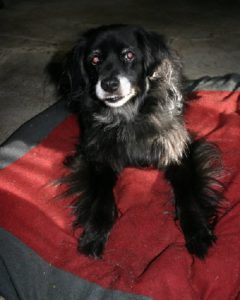


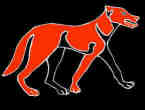
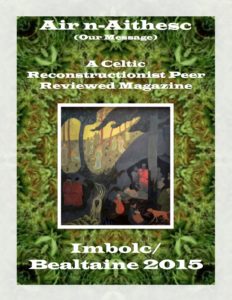
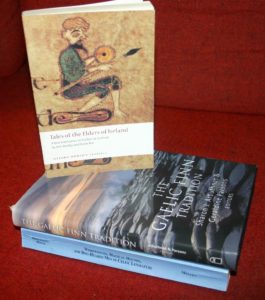 So taking Maya St.Clair’s, who blogs as
So taking Maya St.Clair’s, who blogs as 